|
BULB LOG 40 - 6th October 2006
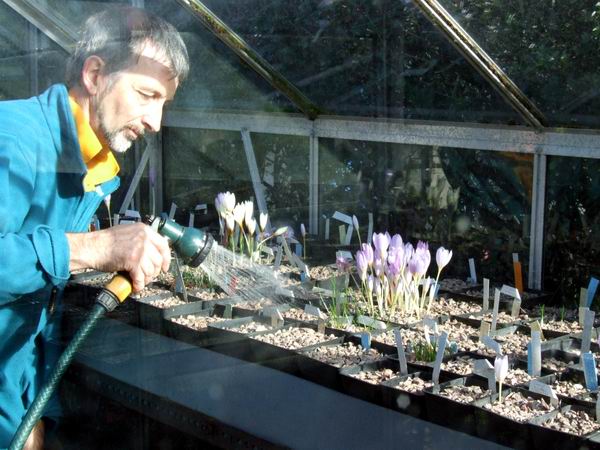
October storm
October has arrived and so has the second autumn storm as I have now given the bulbs their second through soaking. You should notice, as you flood the pots for the second time, that they drain much more quickly than they did during the first soaking. This is because a drainage structure will have formed through the newly mixed compost as a result of the September storm.
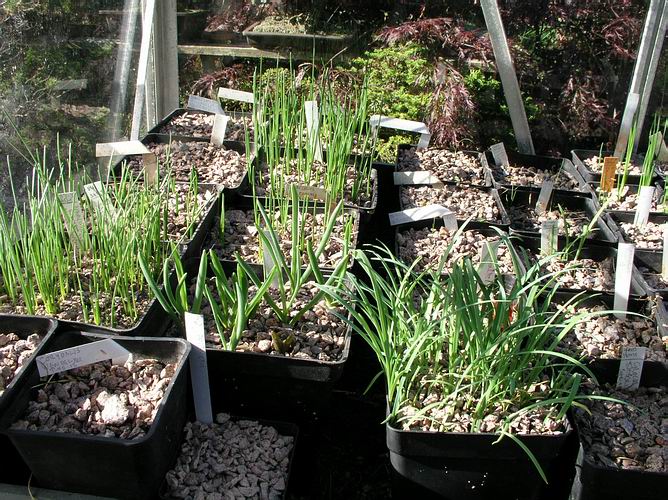
Leaves have appeared
The leaf growth on many of the Narcissus is well advanced now and this is partly due to the watering in September but it is also encouraged on by the exceptionally mild September we have had - in Aberdeen the average temperature for September was 14.5C; this is the warmest since records began. I believe that if we have warm weather when the Narcissus bulbs start into growth and form their roots then we will get an early flowering on the likes of Narcissus romieuxii and if it is cold in September and October then we will get a late flowering. I used to be amazed to hear from friends in the south that they had N. romieuxii in flower in October when ours did not produce their first flower until January but now the climate is shifting and we are getting milder conditions we also enjoy these wee daffodils over a much longer period. As an example we used to put Narcissus 'Camoro' on the show bench in late March on a regular basis, and now it hits its peak flowering in November/December.
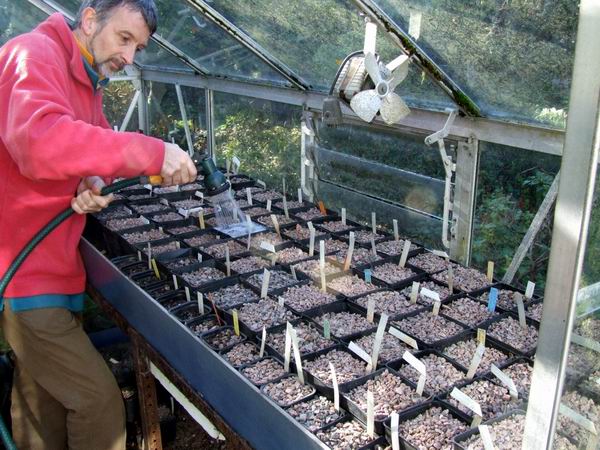
Frit House first storm
Another change to my regime caused by the warmer weather is that I have been watering the Fritillarias later than I used to. I think that many of the Fritillaria root that bit later than the Narcissus and may require a lower temperature to break dormancy and stimulate root activity. In recent years when I repot the frits I have been finding an increasing number of bulbs that have rotted away to a ghost without any signs of roots, indicating that they rotted before they started into growth. I have to conclude from this that I have been watering too soon and the warm moist conditions allow wet rots to attack the dormant bulb when it cannot defend itself - for this reason I am only now applying the first storm to the frit house. There are more frits mixed with other bulbs in the bulb house and these were watered in September so it will be interesting to compare the results when I repot next year. One exception to this late watering of the frits has been all the Chinese species; these I have kept just moist since
they were repotted in July and were already showing new root activity so they also received the September storm.
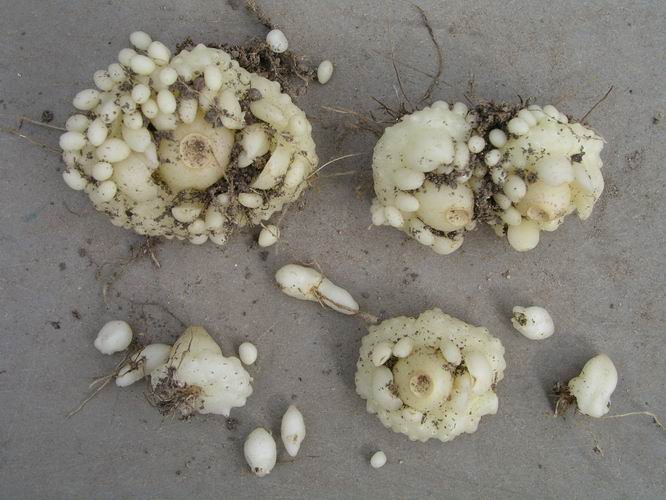
Fritillaria affinis bulb North American rice grain bulb
While I am on about Fritillarias I want to air some more of my thoughts about the American rice grain bulbs. I have written various articles about how they differ in their growth pattern from the typical Eurasian twin scaled bulb and now my thoughts have progressed further. A few logs ago I talked about the problems in distinguishing between true bulbs, which consist of a cluster of modified leaf bases, and corms which are a swollen and compressed stem and with that in mind I have been looking carefully at the American rice grain bulbs.
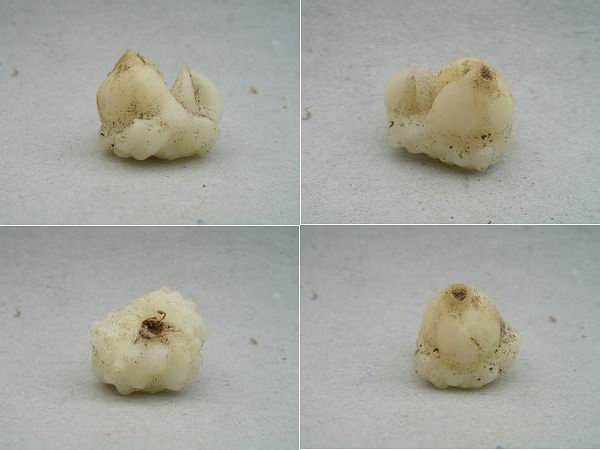
Fritillaria affinis bulb
Here I show a small Fritillaria affinis bulb with the rice removed; the question in my mind is: does the flower stem arise from the basal plate and pass through the scales, as in the Eurasian frits, or does the stem arise from the top of the scales.
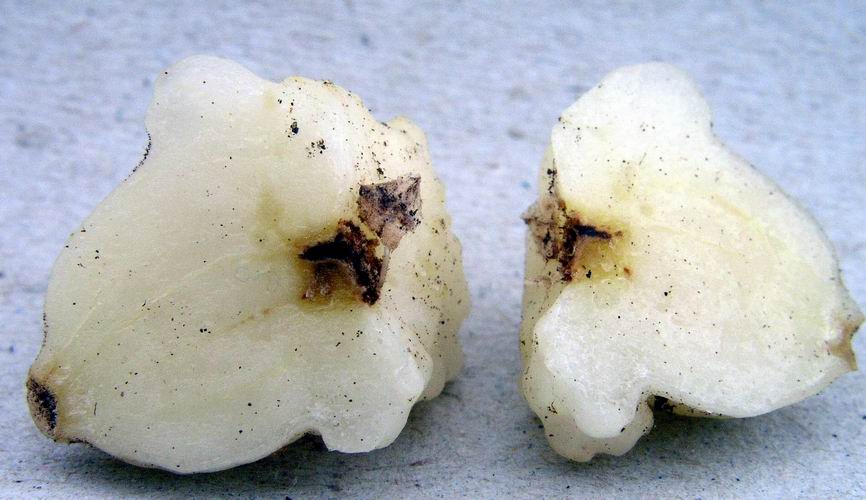
Fritillaria affinis bulb cut
If it arises from the basal plate and passes through the scales, then this would suggest that the scales are modified leaves and so it is a bulb, but if the stem arises from the top, then it is a stem and so it is a corm.
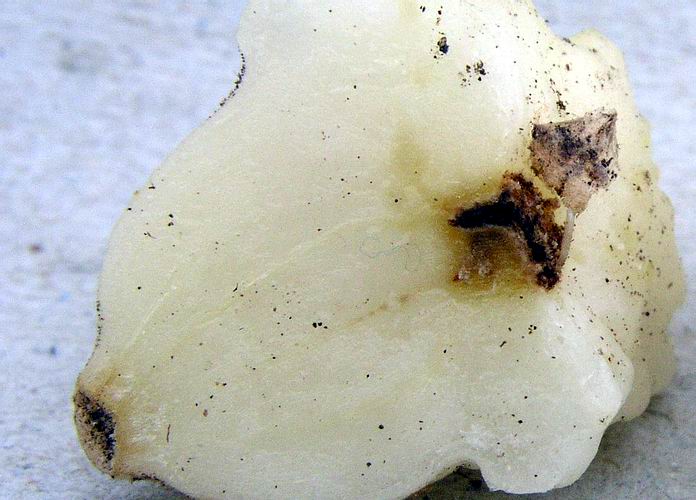
Fritillaria affinis bulb detail
Here is a closer look and to support the bulb theory it is just possible to pick out what could be the traces of the stem rising from the basal plate through the structure but they are fused - I cannot prise it out like I can with other bulbs. To support the corm theory the remnants of this past season's stem has only died back to the top of the structure and not to the basal plate at the bottom, suggesting it is a swollen stem. I am definitely going to do more research on these bulbs this year to try and answer my questions - well, it keeps me amused and your comments and observations would be most welcome.
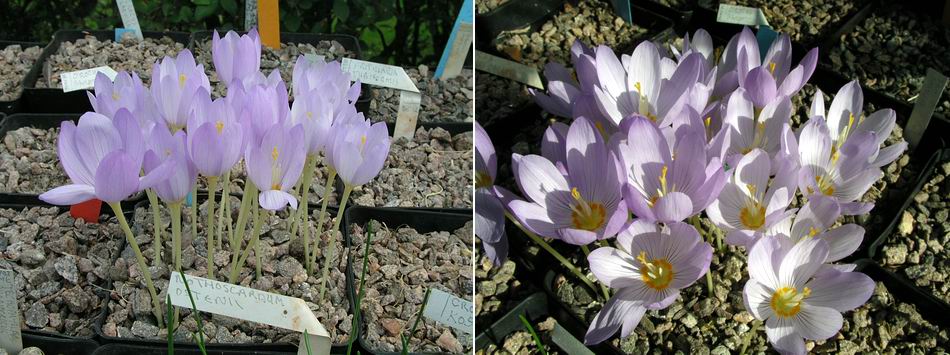
Crocus kotschyanus
Back to the flowers and since last Tuesday, when we had very few Crocus species in flower, the warm sunny weather has brought out a flush of flowers like Crocus kotschyanus. Also known sometimes as Crocus zonatus this plant is often offered in garden centres where you will get a bag of huge corms for a very modest charge. These corms will flower well the first year you get them but then they normally start to break down into more and more, smaller and smaller corms each successive year never producing another flower. I do not know how the producers of these get them to that size - I suspect it is a combination of having selected a clone that thrives in their conditions and heavy feeding. If you want to have this beauty flowering every year then my advice is to grow it from seed or buy seed raised corms from a specialist bulb grower - these should then flower every year provided they are given good drainage and a sunny position. I also like to keep some in a pot to enjoy them up close under glass.
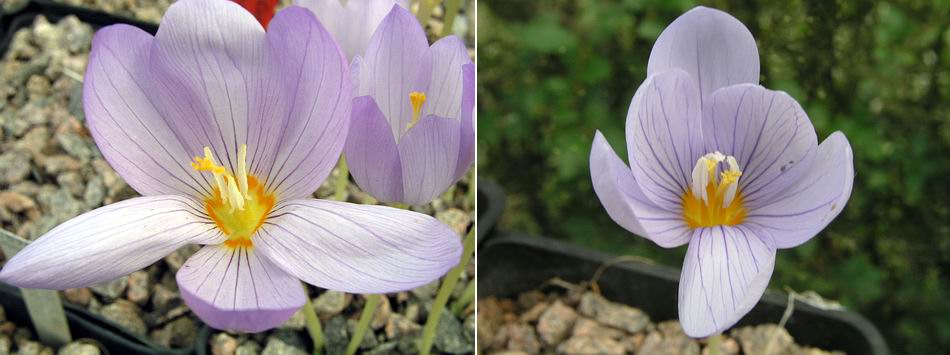
Crocus kotschyanus and pulchellus
I am often confused by the similarity between the flowers of Crocus kotschyanus and pulchellus, they can look almost identical until you tune your eye in. The corms of course are quite different but you do not see them at the same time as the flowers and to add further confusion there are more and more crocus hybrids appearing in cultivated stocks.
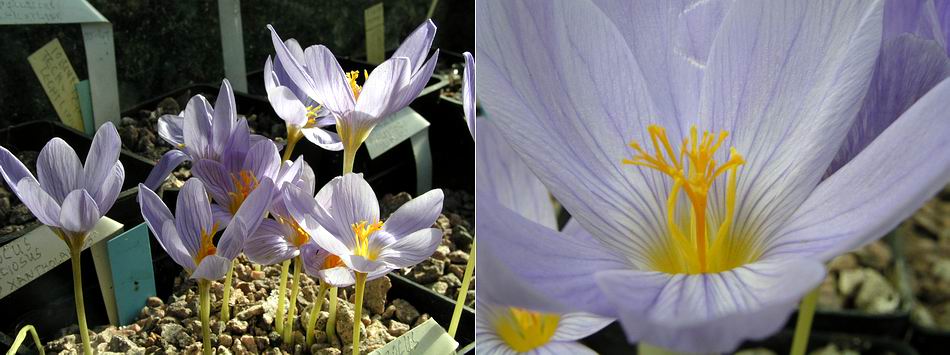
Crocus speciosus xantholaimos
We have several forms of Crocus speciosus starting to flower now and this is the form with a yellow instead of a white throat and it is called ssp. xantholaimos. We find it a very good grower setting plenty of seed most years.
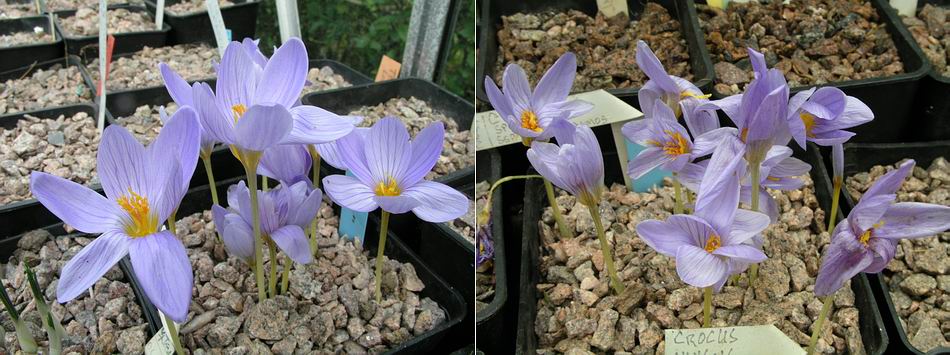
Crocus speciosus
Most of these autumn crocuses are fickle and can go over in poor weather as quickly as they appear but their fleeting beauty with often fabulous scent as well, make them worth growing. It cheers the gardener as we approach the dark winter months with a hint of what we can look forward to when spring comes around and as a double bonus many of them will produce a second or even third flush of flowers after the first ones have past.
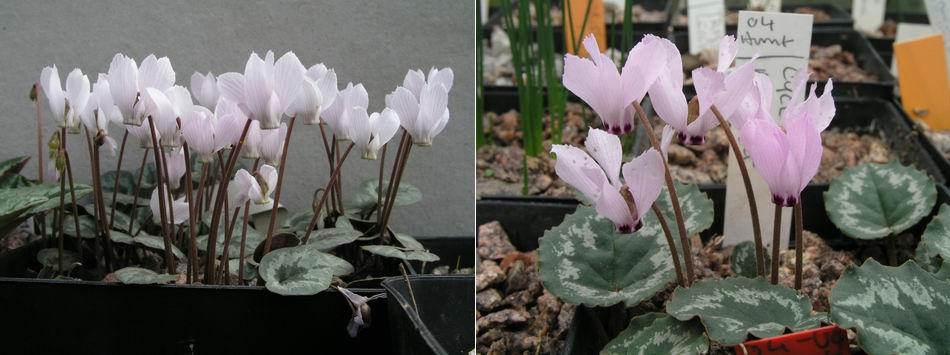
Cyclamen intaminatum and mirabile
I wish I had more space under glass so I could grow more Cyclamen - I am especially fond of C. intaminatum and mirabile. As growers we have to be rational and accept that we cannot grow everything but can instead enjoy other peoples plants seen at shows and increasingly on the forum pages of this website. Thank you to all of you who post the wonderful pictures every day. I sometimes think that I have become redundant when I look at the stunning pictures of not only bulbs and flowers but insects, birds, animals and all that are shown there.
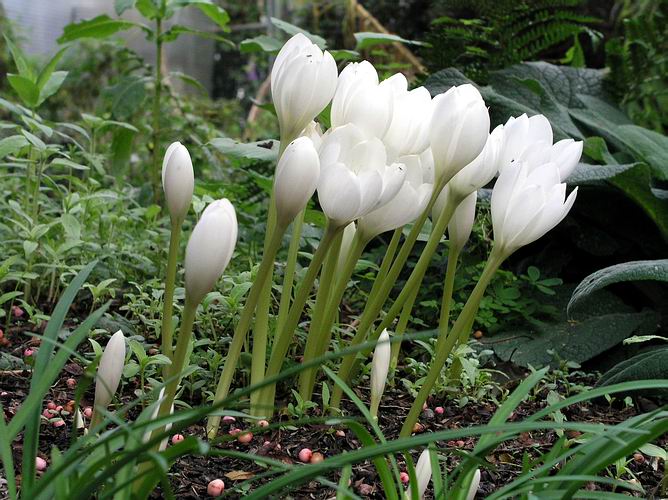
Colchicum speciosum album
In the garden Colchicum speciosum album is looking majestic with its lime green stem terminating in purest white flower in the shape of a wine glass when it opens on a warm day.
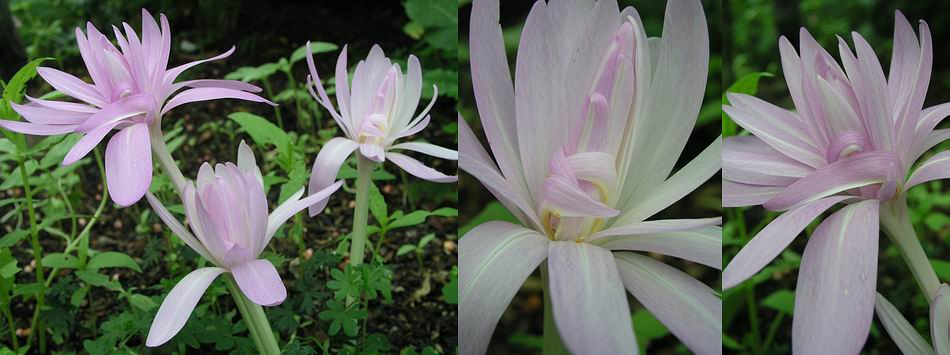
Colchicum 'Water lily'
Not so majestic or elegant, well not in my eyes, is this mutated monstrosity, Colchicum 'Water Lily'. Ok that is a bit hard and in its defence I have to own up to the fact that if I really hated it I would not still be growing it. It does fascinate me and it is a good example of how the genetics of a plant can cause this mutation of multiple extra petals. One good thing I can say of Colchicum 'Water lily' is that because of the bulk of the extra petals it still looks good when it is lying on the ground battered over by the weather.
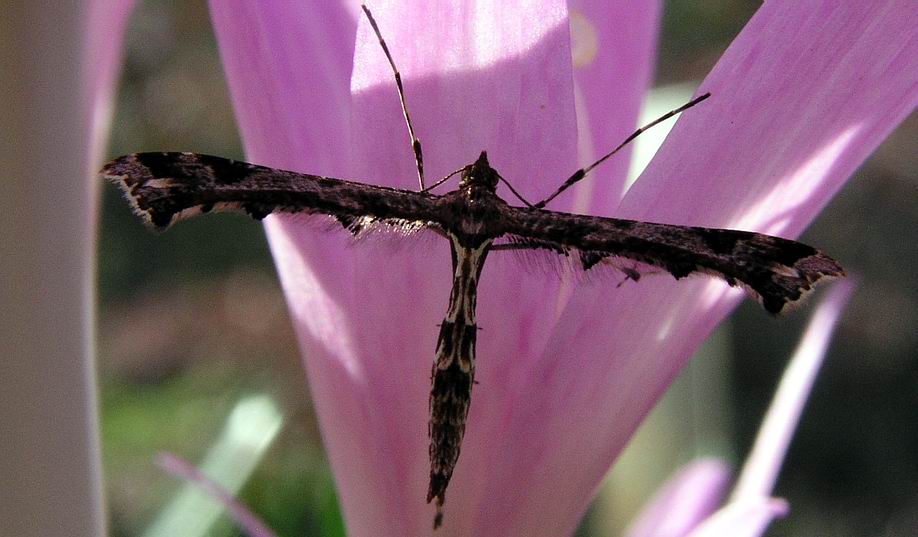
Bug on colchicum
And finally for this week another appeal for help from all you entomologists out there, what on earth is this beautiful bug I found resting on a small colchicum in the bulb house - it is approx 2cms from wing tip to tip?
^ back to the top ^
|

